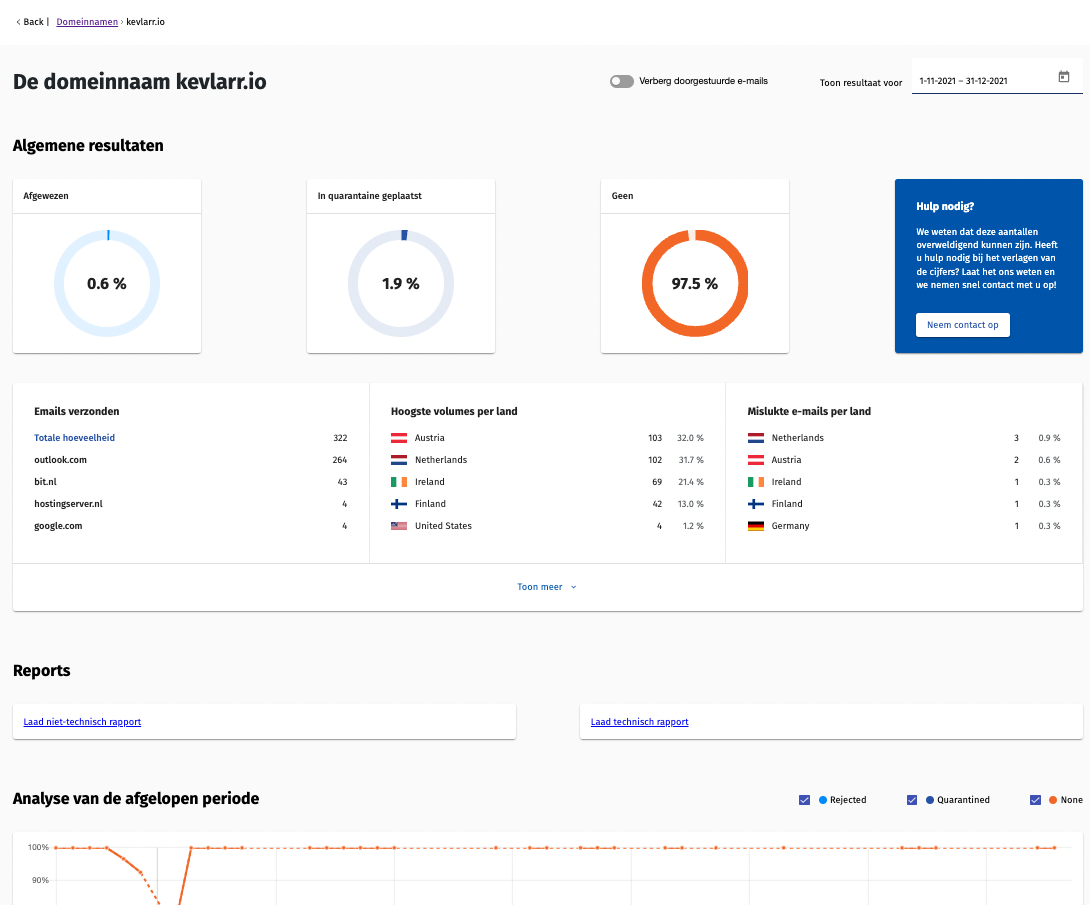User experience
From our experience, Kevlarr's user interface is generally clean and intuitive, aiming to simplify DMARC management. While some users have noted that it can take a bit of time to navigate to specific pages, the overall experience is geared towards efficiency. The dashboard quickly surfaces critical information, making it easy to spot issues at a glance.
The setup process is straightforward, often involving a custom-generated DMARC policy that integrates smoothly with existing DNS records. We appreciate how it abstracts much of the underlying complexity, allowing users to focus on decision-making rather than data parsing. It's built for rapid implementation and continuous monitoring.
Docker DMARC Reports presents a more technical user experience, reflecting its self-hosted, open-source nature. While the web interface is functional and provides necessary data, it doesn't offer the same level of polish or guided insights as a commercial SaaS product. Users need to be comfortable with Docker, command-line interfaces, and manual configuration.
The setup involves deploying Docker containers, configuring a database, and ensuring DMARC records point to an IMAP mailbox. This hands-on approach means the user controls every aspect, but it also requires a higher level of technical proficiency and ongoing maintenance. For those with the technical chops, it offers complete transparency and customization.











































 4.8 / 5(16)
4.8 / 5(16)
 0 / 5(0)
0 / 5(0)



